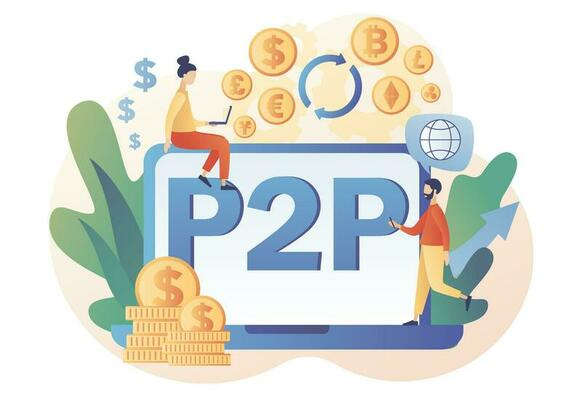Admit it, you’re hooked on subscriptions. From binging the latest shows to devouring monthly snack boxes, subscriptions have stealthily invaded our lives.
But did you know that the subscription economy is booming on a whole different scale, projected to hit $1.5tn by 2025.
For companies, subscriptions provide a steady stream of predictable income rather than relying solely on transactional sales.
Customers pay an affordable recurring fee to gain access to continuously updated products, services or content without high upfront costs.
This blog will immerse you in the subscription economy sweeping Malaysia.
We’ll also go over the crucial metrics to track for optimizing your subscription income flows.
Whether you already have a subscription offering or aim to implement one, this comprehensive guide will equip you to thrive in Malaysia’s booming subscription market.
What is a subscription-based business model?
A subscription-based business model in Malaysia and around the world centers on a straightforward idea – customers pay a recurring fee, typically monthly or annually, for access to a product or service. This fee is generally billed automatically, ensuring a seamless transaction cycle.
Subscribers gain access to software/service via web browsers, apps, or direct downloads. The responsibility for maintenance and updates lies with the provider, eliminating the need for on-site support. Additionally, subscribers can access customer support remotely through various channels such as chatbots, emails, and phone calls.
The model emphasizes not just customer acquisition, but also delivering substantial value through the product, user experience, and customer support to maintain loyalty and repeat business. It builds a profitable, long-term relationship by providing continuous value, ensuring that customers repeatedly pay for access to a service or product.
The popularity of the subscription-based business model stems from its flexibility, which appeals to customers and enables SaaS companies to adapt swiftly to changes in customer preferences and market conditions.
Investors are particularly fond of this model because it offers a predictable overview of future earnings by analyzing current revenues, customer churn rates, net revenue retention (NRR), and other critical SaaS metrics. This pricing model is appealing for its stability and ongoing benefits to all stakeholders as long as the recurring payments continue.
How Do Subscription Business Models Work?
Despite their varied applications, subscription models share common operational features that establish them as dependable sources of revenue and means to sustain customer relationships. Let’s delve into their mechanics:
Recurring Payments: At the heart of the subscription service in Malaysia is the principle of periodic payments. Customers regularly pay at designated intervals—weekly, monthly, or annually—maintaining their access to a product or service and providing businesses with stable revenue.
Customer Accounts: Subscribers usually have personal accounts where they can control their subscriptions. These accounts may allow them to update payment details, pause or cancel their subscriptions, or switch between different subscription levels.
Tiered Access: Many subscription services adopt tiered pricing structures, where various investment levels grant access to different features or services. This model enables customers to tailor their subscriptions based on their needs and financial comfort.
Free Trials and Conversions: Offering free trials is a prevalent tactic to entice potential subscribers. The aim is to showcase the service’s value, hoping that users will choose to subscribe after the trial period.
Content and Product Updates: To keep subscribers engaged, businesses must regularly update their offerings. This could involve adding new features, content, or products, which helps sustain subscriber interest and reduce turnover.
Customer Service: Beyond transactions, subscriptions represent a relationship between a business and its customers. Thus, providing prompt and efficient customer service is crucial for addressing any concerns, queries, or feedback.
Metrics and Analysis: It’s vital to monitor key metrics such as churn rate, growth rate, and customer lifetime value. These metrics provide insights that help businesses refine their strategies and enhance their offerings.
Legal and Compliance: Complying with legal standards, like clear terms of service and straightforward cancellation procedures, is not only best practice but often a legal requirement.
Top Examples of Subscription-Based Models
Whether you are involved in a SaaS company in Malaysia or a streaming service, understanding the model better starts with examining successful subscription companies across various industries.
Streaming Services
Content streaming services are some of the most notable examples of subscription-based businesses. Companies like Netflix have achieved tremendous success by capitalizing on the scalability of subscriptions.
Monthly Subscription Boxes
Subscription boxes such as Stitch Fix and Dollar Shave Club have simplified shopping for consumer goods like clothing and personal hygiene products. Their subscription pricing capitalizes on the appeal of convenience, making it financially rewarding.
Software Subscriptions
Subscribing to software platforms allows customers immediate access to the latest features, bypassing the wait for new releases. Major firms like Adobe have successfully implemented this model at large.
Magazine Subscriptions
One of the earliest forms of subscription services, magazine subscriptions continue to thrive, whether in print or digital format. Customers keen on staying updated are willing to pay a recurring fee for fresh content.
Food Services
Meal-kit services such as Blue Apron and HelloFresh leverage a convenience-driven subscription model. They enhance value by offering products tailored to specific dietary preferences, much like traditional subscription boxes but focused on food.
By exploring and reading more about these examples, companies can gain insights into the SaaS Economics in Malaysia and beyond, understanding how diverse industries leverage subscriptions for growth and customer retention.
Crucial Metrics for SaaS Companies in Malaysia to Track
Monitoring the right unit economic metrics can empower SaaS Companies in Malaysia to identify growth opportunities and plan for the future effectively.
Some key SaaS unit economic metrics that SaaS Companies should prioritize include:
- Cost per customer – For SaaS Companies, this cost is often determined by how customers utilize specific features within the software and the associated cloud costs.
- Lifetime value (LTV) – This metric indicates the total value each customer generates for the SaaS company over time. An increasing LTV often leads to improvements in other positive metrics.
- Customer acquisition costs (CAC) – CAC reveals the expenditure incurred by a SaaS company to acquire an additional customer. High CAC can hinder profitability.
- Churn rate – This figure illustrates the proportion of users who cancel or fail to renew their subscription within a defined period.
- Total revenue – Revenue demonstrates the positive cash flow generated by SaaS Companies, which is especially important during fundraising efforts.
- Number of customers (C) and transactions (T) – Tracking the current customer base and transaction volume can guide SaaS companies in developing effective scaling strategies.
- Average customer lifetime (ACL) – ACL describes the average duration for which customers subscribe or use the software of SaaS Companies in Malaysia. A higher ACL can justify a higher CAC.
- Gross profit – This universal metric calculates the difference between revenue and the cost of sales for SaaS companies.
- Gross margin per customer lifespan (GML) – GML helps SaaS companies in Malaysia examine LTV on the margin, rather than over the customer’s entire lifetime.
Let’s Chat
At Segwitz, we understand the dynamics of the subscription economy and are equipped to be your tech and development strategy partner, offering comprehensive support from inception to execution. Our expertise is not limited to guiding SaaS businesses; our extensive repository of blogs covers development, technology, and the latest industry news.
Explore, learn, and stay ahead with us. Visit our blog here to dive deeper into the world of technology and mobile app development. Let’s navigate the future of subscriptions together, ensuring your business not only participates but leads in this evolving market landscape.



